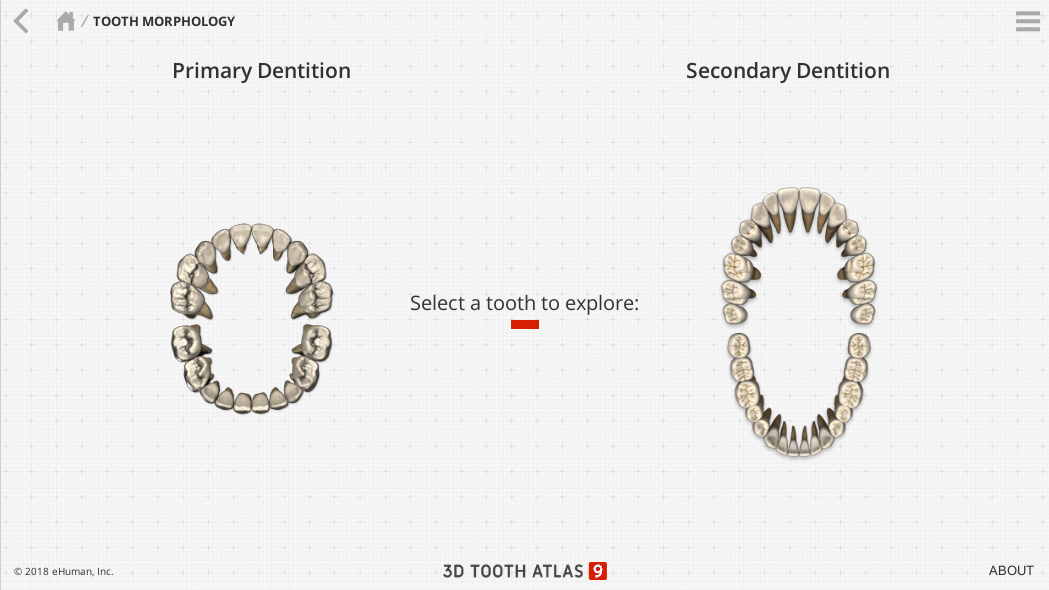

- #3d tooth atlas activation code manual#
- #3d tooth atlas activation code full#
- #3d tooth atlas activation code registration#
We demonstrate that this new open-source toolbox for automated brain image analysis is robust to morphological variation and can process multiple data sets in a relatively automated manner.īrain-to-atlas and atlas-to-brain scaling in MesoNet An MBFM based U-Net model (MBFM-U-Net) can directly predict positions of anatomical brain regions from the spatial structure of MBFMs. MBFMs can then be used to train a learning-based framework, VoxelMorph 35, which nonlinearly deforms the reference atlas to register it to the brain image. Spontaneous cortical activity was assessed by recovering regional activity motifs 34 and using them to generate motif-based functional maps (MBFMs). As such, we extended this anatomical alignment approach with three pipelines that can use functional sensory maps or spontaneous cortical activity. We suggest that functional maps that represent specific spatio-temporal consensus patterns of regional activation observed using activity sensors such as GCAMP6 2, 30, 31 or potentially hemodynamic activation 32, 33 can also be used for atlas registration. This alignment approach, while robust in the presence of anatomical landmarks, does not leverage regional patterns within functional calcium imaging data that are related to underlying structural connectivity 2, 30, 31. For the brain-to-atlas approach, our system automatically registers cortical images to a common atlas using predicted cortical landmarks. Another fully convolutional network U-Net 28, 29 was then used to delineate the brain boundaries automatically. The predicted landmarks are then used to re-scale a reference atlas (adapted from Allen Mouse Brain Atlas) 26, 27 to the brain. For atlas-to-brain, we trained a deep learning model 25 to automatically identify cortical landmarks based on single raw fluorescence wide-field images.

In this study, we developed two approaches for brain atlas alignment that either scale the atlas to a brain or re-scale the brain to fit a common atlas. Deep learning models have also been used to predict fluorescence images of diverse cell and tissue structures 23, as well as segment neurons on images recorded through two-photon microscopy 24, but not for wide-field images. For instance, in magnetic resonance imaging studies, deep neural networks could precisely delineate brain regions 21, 22.

#3d tooth atlas activation code manual#
This is particularly crucial when using high-throughput neuroimaging approaches, such as automated mesoscale mouse imaging 15, 16, 17, 18, where the amount of data generated greatly exceeds the capacity of manual segmentation.ĭeep learning techniques have been used as powerful tools for medical image analysis, including a wide range of applications such as image classification and segmentation 19, 20.
#3d tooth atlas activation code registration#
Automatic registration and segmentation of brain imaging data can greatly improve the speed and precision of data analysis and do not require an expert anatomist. Wide-field cortical calcium imaging in mice has become increasingly popular as it allows efficient mapping of cortical activity over large spatio-temporal scales by expressing cell-type-specific genetically encoded calcium indicators (GECI) such as GCaMP6 5, 6, 7, 8, 9, 10, 11, 12, 13, 14.
#3d tooth atlas activation code full#
A full understanding of cortical activity data requires a reliable approach to segment and classify the different regions of interest based on known anatomical and functional structures. The cerebral cortex is an exquisitely patterned structure that is organized into anatomically and functionally distinct areas 1, 2, 3, 4. This Python-based toolbox can also be combined with existing methods to facilitate high-throughput data analysis. We present this methodology as MesoNet, a robust and user-friendly analysis pipeline using pre-trained models to segment brain regions as defined in the Allen Mouse Brain Atlas. This anatomical alignment approach was extended by adding three functional alignment approaches that use sensory maps or spatial-temporal activity motifs.

Another fully convolutional network was adapted to delimit brain boundaries. A deep learning model identifies nine cortical landmarks using only a single raw fluorescent image. Here, we developed an automated machine learning-based registration and segmentation approach for quantitative analysis of mouse mesoscale cortical images. Matching an anatomical atlas to brain functional data requires substantial labor and expertise. Understanding the basis of brain function requires knowledge of cortical operations over wide spatial scales and the quantitative analysis of brain activity in well-defined brain regions.


 0 kommentar(er)
0 kommentar(er)
